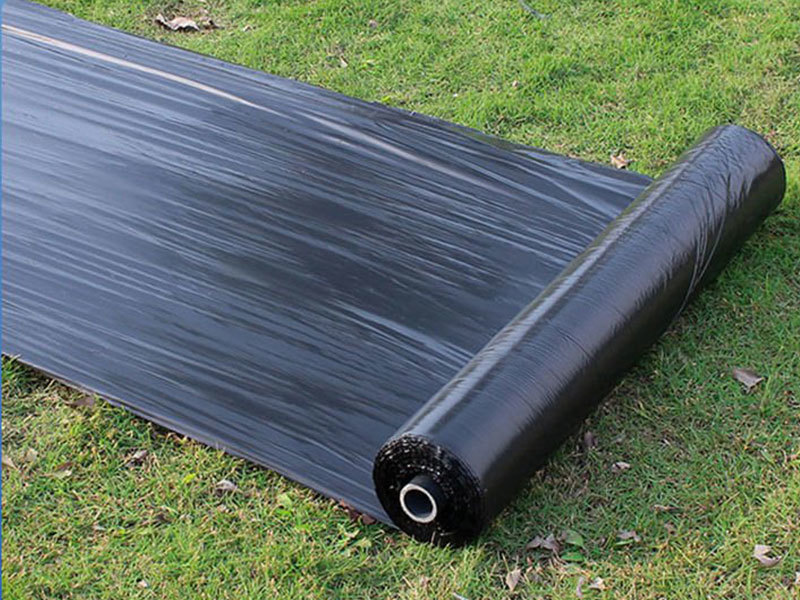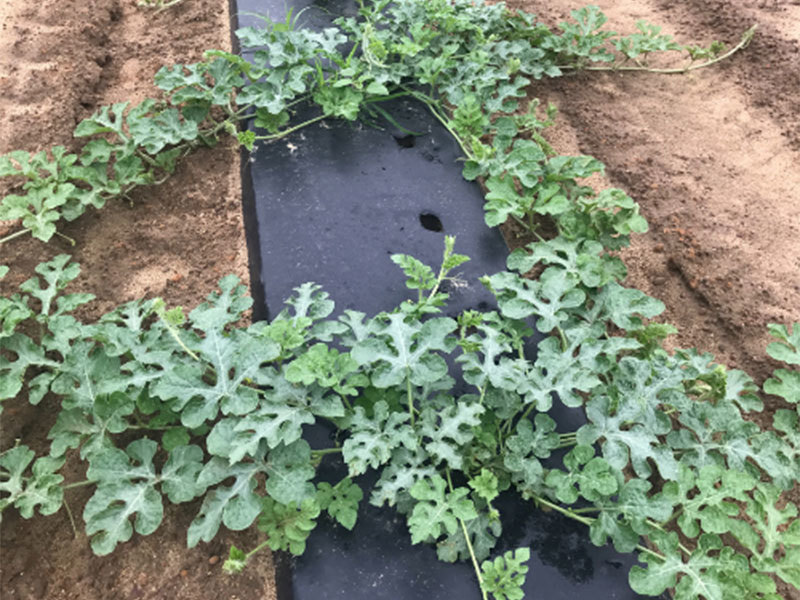how to plant watermalon by mulch film
Publish Time:
2025-07-23
Planting watermelons using mulch film is an effective method that helps retain soil moisture, suppress weeds, regulate soil temperature, and reduce fruit rot by keeping melons off the wet ground. Here’s a step-by-step guide to successfully grow watermelons with mulch film:
Planting watermelons using mulch film is an effective method that helps retain soil moisture, suppress weeds, regulate soil temperature, and reduce fruit rot by keeping melons off the wet ground. Here’s a step-by-step guide to successfully grow watermelons with mulch film:
1. Prepare the Soil
Watermelons thrive in well-draining, fertile soil with a pH of 6.0–6.8.
Choose a sunny location: Watermelons need at least 6–8 hours of direct sunlight daily.
Till the soil: Loosen the soil to a depth of 12–18 inches (30–45 cm) to improve drainage. Remove rocks, roots, and debris.
Add amendments: Mix in compost (2–4 inches/5–10 cm), aged manure, or a balanced fertilizer (e.g., 10-10-10) to boost nutrients. Avoid excessive nitrogen, which can promote leaf growth over fruit.
2. Form Raised Beds or Rows
Raised beds: Create beds 4–6 feet (1.2–1.8 m) wide and 8–12 inches (20–30 cm) high. This improves drainage and warms soil faster.
Rows: If using rows, space them 6–8 feet (1.8–2.4 m) apart to allow vine spread.
3. Choose the Right Mulch Film
Plastic mulch: The most common option.
Black mulch: Best for warming soil (ideal for cooler climates) and suppressing weeds.
Silver/white mulch: Reflects light to deter pests (e.g., aphids) and keeps soil cooler in hot climates.
Biodegradable mulch: Eco-friendly alternative that breaks down over time (no need to remove after harvest).
Thickness: Use 1.5–2 mil thick film for adequate durability.
4. Lay the Mulch Film
Smooth the soil: Rake the bed/row to create a flat, even surface.
Secure the edges: Unroll the mulch film over the bed, ensuring it covers the entire planting area. Bury the edges 4–6 inches (10–15 cm) deep in the soil to prevent wind from lifting it. Alternatively, use landscape staples to anchor the edges.
Leave no gaps: Ensure the film is tight against the soil to maximize moisture retention and weed control.
5. Plant Watermelon Seeds or Seedlings
Timing: Plant after the last frost date when soil temperatures reach at least 65°F (18°C).
Seedlings: Transplants are often easier than seeds with mulch.
Use a sharp knife or scissors to cut 3–4 inch (7–10 cm) diameter holes in the mulch, spaced 2–3 feet (60–90 cm) apart in the row/bed.
Dig a hole in the soil through the hole, place the seedling (with its root ball), and backfill with soil. Water gently to settle the soil.
Seeds:Cut holes as above, then plant 3–4 seeds per hole, 1 inch (2.5 cm) deep. Thin to 1–2 strong seedlings per hole once they reach 2–3 inches (5–7 cm) tall.
6. Watering
Drip irrigation: The best way to water under mulch. Install drip lines before laying the mulch, running them along the base of where plants will be. This delivers water directly to roots without wetting the leaves or fruit.
Avoid overhead watering: If drip isn’t available, water carefully through the planting holes to minimize moisture on the mulch (which can cause rot).
Water deeply: Watermelons need consistent moisture, especially during fruit development. Aim for 1–2 inches (2.5–5 cm) of water per week.
7. Care for Growing Watermelons
Fertilization: Once vines start to spread, side-dress with a low-nitrogen fertilizer (e.g., 5-10-10) through the mulch holes to support fruit growth.
Prune vines (optional): For smaller gardens, prune excess vines to 2–3 main stems per plant to control spread.
Support fruit (optional): For heavy melons, place a small board or straw under the fruit (on top of the mulch) to prevent pressure damage and further reduce rot risk.
Pest/disease control: Monitor for pests (e.g., cucumber beetles) and diseases (e.g., powdery mildew). The mulch will help reduce some issues, but treat problems promptly with organic or chemical solutions as needed.
8. Harvest
Watermelons are ready when:
The bottom (where it touches the mulch) turns from white to yellow.
The rind sounds hollow when tapped.
The tendril near the fruit stem dries and turns brown.
By following these steps, mulch film will create optimal growing conditions for watermelons, leading to healthier plants and a bountiful harvest!
|
|
|
|
BLOGS

Unveiling the Power of Black&Silver Color Plastic Mulch Films in Agriculture
Discover how Black&Silver Color Plastic Mulch Films can revolutionize your farming strategy. Learn about their benefits and applications.

Unlocking the Benefits of Black Embossed Mulch Film in Modern Agriculture
Explore the latest trends and advantages of using black embossed mulch film in agriculture.

Unlocking the Secrets of Black&Silver Color Plastic Mulch Films
Discover the benefits and applications of Black&Silver Color Plastic Mulch Films in gardening and agriculture.

Unlocking the Secrets of Black Embossed Mulch Film in Modern Agriculture
Discover how Black Embossed Mulch Film is revolutionizing farming practices and enhancing crop yields.

Mastering Strawberry Planting Skills for a Bountiful Harvest
Unlock the secrets of effective strawberry planting skills and enjoy a thriving garden full of juicy strawberries!

The Wonders of Black Embossed Mulch Film: A Gardener's Best Friend
Discover how black embossed mulch film can revolutionize your gardening experience. Learn tips and benefits!










